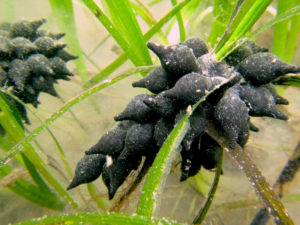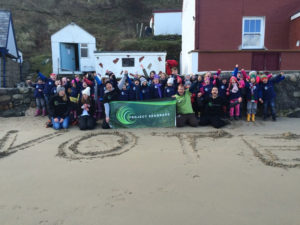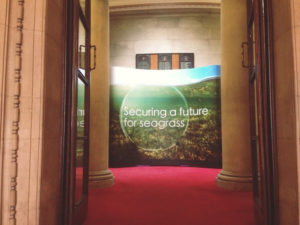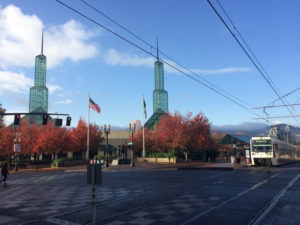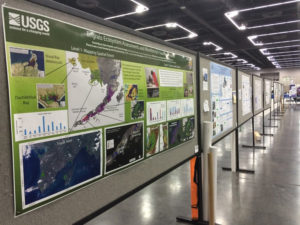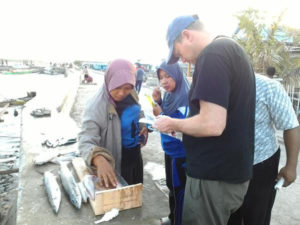Back in 2015 we entered the #PeoplesProjects, a competition held by the Big Lottery Fund and ITV to win up to £50,000 of National Lottery money. The Peoples Projects aimed to give organisations the chance to build upon previous projects they had completed with help from the Awards For All funding scheme. At the time we didn’t even expect to make it past the first round, but you’ve got to be in it to win it, right? We thought long and hard about how Project Seagrass could make a difference to peoples lives. Although as an organisation we’re devoted to conserving seagrass ecosystems, it’s a well known fact that we depend on our marine environment. For this reason we came up with Mission SEA, which aimed to bring the ‘coast to the classroom’ and the ‘classroom to the coast’ to engage Wales’ children with our marine natural heritage. The education scheme we proposed, which would have involved 15,000 children from the counties of Gwynedd, Ceredigion and the Isle of Anglesey, sought to teach children about the resources that our seas provide, whilst inspiring them to become future guardians of our oceans. Mission SEA is about inspiring children to protect our marine environment We were absolutely delighted to make it to the final 5, and after a tough two weeks of campaigning, we’re gutted to say that we didn’t make the top 3. The other projects we were up against were as deserving as any and we wish them all the very best for the future. Reflecting on our campaign, we’ve learnt a lot, and regardless of whether we won or not, we valued the experience, exposure and support more than anything. The support we gained for our project was overwhelming and we’d like to thank each and every one of you that voted for us. Although we didn’t receive the £50,000 we needed, our Mission SEA isn’t over yet! Seagrass meadows around our British Isles have recently been shown to be in a ‘perilous state’. Mission SEA is more than a project; it’s built on a philosophy that education is key to saving our planet. By focusing on seagrass, the importance of marine habitats can be explained using things that children understand, from the golden sand of our beaches to the range of fish in our chip shops. Seagrass is an ideal focus because it’s important for sustaining our fisheries and absorbing vast amounts of CO2, whilst also providing a home for charismatic animals like seahorses. Education is key to saving our planet – getting children outdoors to experience nature is part of this. Green space is widespread across the UK and although it’s recommended schools should be ensuring that primary age children experience visits or are engaged with nature, a recent government funded study revealed that over 10% of children in England have not set foot in a park, forest, beach or any other natural environment in the last year. There is substantial growing evidence linking the natural environment with good physical health and psychological wellbeing and the ‘Biophilia Hypothesis’ states that the desire for contact with nature is partly innate. Our wealth as a nation and our individual wellbeing depend critically upon the environment. The marine environment provides us with resources essential for life and seagrass provides the processes that purify the air and water. The Welsh coastal environment alone supports over 52,000 jobs, provides around £5 billion total income to businesses in Wales and contributes to around £1.5billion of GDP to the economy of Wales. These values are hugely significant, yet the marine environment and the services it provides us are still under appreciated. There is a great potential to further increase these values through inspiring habitat and biodiversity conservation. As both physical activity and nature can positively affect wellbeing we hope that Mission SEA has the potential to leave a legacy, stimulating the next generation to appreciate the benefit of our natural coastline, while inspiring action for marine habitat and biodiversity conservation for the communities that depend on them. To Project Seagrass, the Peoples Projects was never a competition, it was never about winning or losing. We saw it as an opportunity for us to develop as an organisation, to grow stronger, more committed to our goal! Although we didn’t win the £50,000, we didn’t lose either. We’ll continue to push for our Mission SEA, to fight for the environment with no voice, and we’d love to invite you to join us. “In the end, we will conserve only what we love, we will love only what we understand, and we will understand only what we are taught.”
